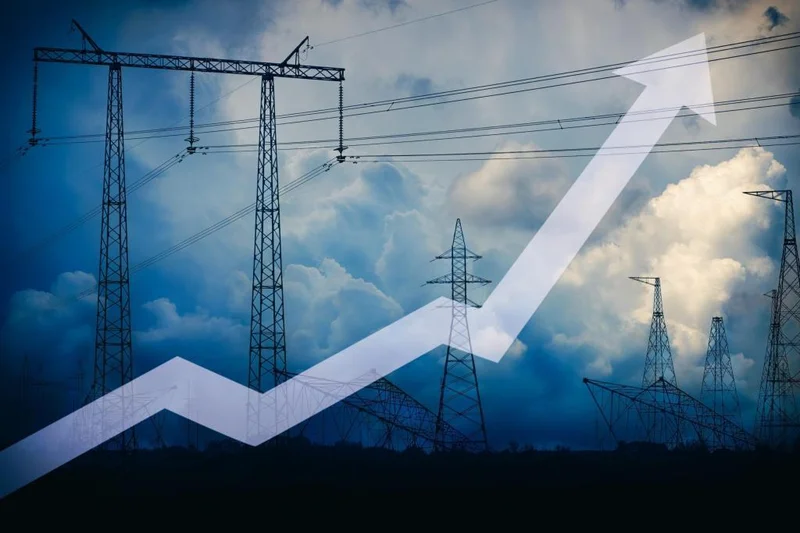Generated Title: NV Energy's New Math: Why Nevada's 'Fairer' Power Bills Don't Add Up
On September 16, 2025, in a move that was as swift as it was consequential, Nevada’s Public Utility Commission (PUC) rubber-stamped a new rate structure for NV Energy (Regulators approve demand charge, net metering changes for NV Energy). The vote was unanimous (a 3-0 decision), but the consensus ended there. While the approved rate increase was significantly less than the utility's initial $224 million request, the real story isn't about the total dollars collected. It’s about a fundamental rewiring of the financial relationship between a monopoly utility and its captive customers.
NV Energy is framing this as a modernization—a shift towards a more equitable system where, as Commissioner Tammy Cordova put it, people pay for the "cost of the service that’s provided to them." The utility’s CEO, Brandon Barkhuff, insists they are "committed to keeping costs low."
But when I look at the mechanics of the new structure, I don’t see simple fairness. I see a masterclass in statistical obfuscation. The utility is introducing a system so complex, so sensitive to behavioral outliers, that it effectively shifts significant financial risk from their balance sheet onto the budgets of households and small businesses. They’re calling it fairness. From a data perspective, it looks more like a calculated ambiguity designed to favor the house.
Deconstructing the Demand Charge
Let's begin with the centerpiece of this new model: the daily demand charge, set to roll out in southern Nevada in April 2026. On its face, the concept sounds logical. Your bill will be partially based on your single highest 15-minute period of energy consumption during peak hours each day. The utility argues this aligns costs with the strain individual users place on the grid.
The problem lies in the volatility this introduces into household budgeting. Your monthly electricity cost is no longer just a function of total kilowatt-hours used; it's now acutely sensitive to brief, overlapping moments of high consumption. Imagine a family arriving home on a hot August afternoon. The air conditioner is running, someone starts the electric oven for dinner, a teenager plugs in an electric vehicle, and another decides to use a high-powered hair dryer. That confluence of events, lasting just 15 minutes, could set a punitive high-water mark for the entire billing cycle.
NV Energy has estimated this will amount to "about $20" on an average customer's bill. Consumer advocates paint a starkly different picture. Advanced Energy United (AEU) calculates the charge could easily add more than $30—or to be more precise, their model shows a $27 increase for a 5 kWh peak and $38 for a 6 kWh peak.

This is the part of the utility's presentation that I find genuinely puzzling. When a company provides a single "average" impact number for a variable charge, my analyst senses start tingling. What does "average" even mean in this context? Are they using the median customer, who might have a very flat and predictable usage pattern? Or are they using a mean average that smooths out the extreme costs that will inevitably be borne by families with less predictable schedules, older appliances, or medical equipment? What is the standard deviation on that $20 average? Is it a tight cluster, or is there a long tail of customers who will see their bills spike by $50, $70, or more? These are not academic questions; they are fundamental to understanding who actually pays for this new "fairness."
The new demand charge is like replacing a fixed-rate mortgage with a complex, adjustable-rate derivative. While the bank might claim the new instrument "better reflects market costs," the homeowner is the one left staring at a payment that could explode because of factors they can barely control, let alone predict. How can a customer budget for a charge that depends on a single quarter-hour of activity a month ago?
The Net Metering Recalculation
The second critical component of this order is the surgical dismantling of the solar net metering program in northern Nevada. Previously, the system worked on a monthly basis. The excess energy a home’s solar panels generated on a sunny afternoon could be "banked" to offset the energy that same home pulled from the grid at night. It was a simple, one-to-one credit system that made solar a reasonably predictable investment.
The PUC has now approved a shift to 15-minute netting. This is not a minor tweak; it is a structural demolition of the program's value. Under this model, a solar panel owner only gets credit for energy they can offset within the same 15-minute interval. The excess power they generate at 2:00 PM is no longer available to offset the power they use to cook dinner at 6:00 PM. As the Clark County Department of Environment and Sustainability correctly argued, this "effectively eliminat[es] any true netting of energy." Their analysis projects this change will slash the annual compensation for a typical solar customer by an estimated $136.
I've analyzed dozens of utility filings that aim to devalue distributed generation, and this 15-minute mechanism is one of the most elegant, and frankly, most cynical, I've seen. It allows the utility to claim it still supports solar while gutting the financial incentive that makes it viable for most homeowners. It directly contradicts the spirit, if not the letter, of Senate Bill 405, a 2017 law enacted specifically to protect the value of energy solar customers export to the grid.
So, we have to ask: how does a policy that demonstrably reduces the value of exported solar energy align with a law designed to protect it? Vote Solar, a prominent advocacy group, is already "weighing all options" to challenge the decision. They see the same contradiction I do. This isn't about updating the grid; it's about reasserting the utility's central control over power generation and distribution.
It's a Feature, Not a Bug
When you strip away the corporate language about "modernization" and "cost-reflectiveness," what remains is a clear transfer of risk. NV Energy's claim that the new structure "does not increase bills but changes the existing structure" is a masterpiece of misdirection. It's technically true that it's a structural change, but one that is mathematically engineered to produce more volatile, less predictable, and for many, significantly higher bills.
The announced "customer education campaign" is the final piece of this puzzle. It’s a tacit admission that the new system is unintelligible to the average person. The utility isn't educating customers on how to save money; it's training them to navigate a newly hostile billing environment of the utility's own creation. The complexity isn't a side effect. It's the entire point. A confused customer is a profitable one. They can't optimize their behavior if they don't understand the rules, leading them to pay more under the guise of "fairness." The real objective here isn't equity; it's revenue predictability for NV Energy and behavior modification for its customers.









